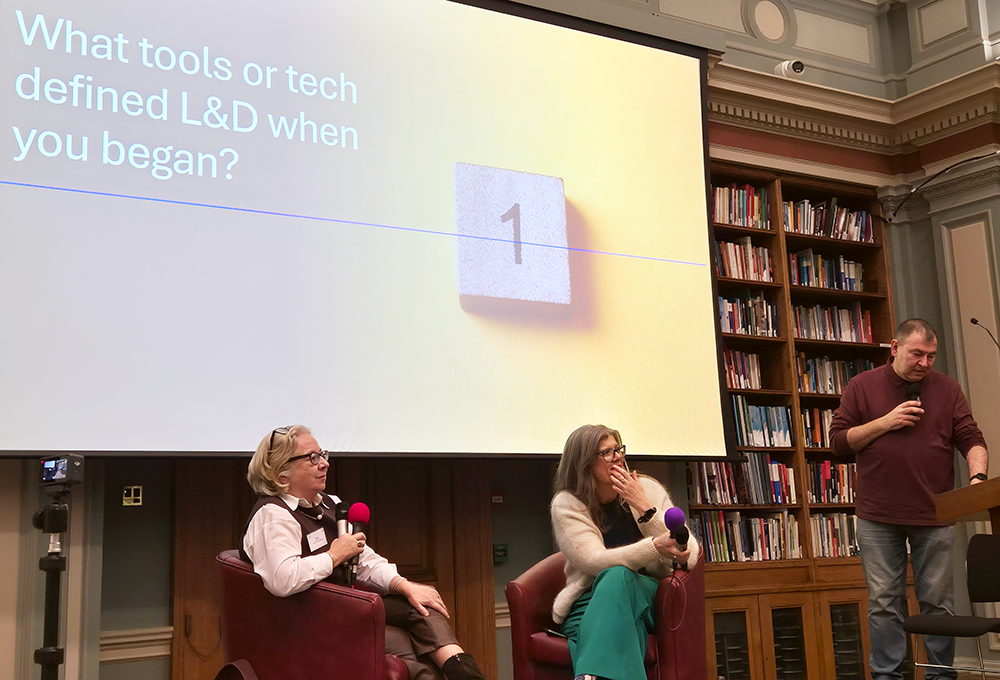Mark Smith shares feedback from discussions with L&D professionals as they reflect on the transformation of the learning landscape.
Although the number of L&D professionals with classroom-only experience entering the lockdown was small, we have all had to learn how to adapt and change to meet the challenges of an entirely virtual world to a greater or lesser degree.
We have also felt the impact of operating in this new environment in terms of our own interpersonal skills and leadership skills. As communicators we have learned how to have more meaningful conversations, strengthen softer skills like empathy and patience and in general become far more resilient.
Here is a brief recap of key post-Covid learning and insights from training and development professionals who I have worked with, as well as feedback from our network on some of the key issues.
Content creation
Learning how to manage complexity was not a new concept. But, when it came to applying this skill to breaking down ideas into simpler bite sized-chunks and aggregating material in a different way, it has been a learning curve for many.
The new online environment acted as a catalyst and it became par for the course to discuss and debate content in ways that we had not done previously and to adapt material as necessary.
I believe that the ability to create and develop programme content is now a critical skill for L&D professionals. Covid has accelerated this trend as many of us have been forced to be creative and learn how to adapt classroom material for on-line delivery without third-party support.
As Nigel Paine, author, broadcaster and adjunct faculty, reflected with me on how the development of content has evolved to a ‘needs-based model’ as opposed to simply delivering a curriculum, course or programme, we also discussed the evolution of the traditional production model for content design.
His view is that the traditional content life cycle involving a range of subject matter experts such as instructional and content designers is moving to a model where learning and development professionals are much more involved in the end-to-end process, from finessing content to introducing alternative material.
“The question is not so much whether or not we got through this period, but how well the opportunity has been used for positive transformation as part of a valuable and complex learning experience” he noted.
I also spoke to Jayne Gardiner, a specialist guest experience trainer and founder of JG consulting and Peter Hovells of Full Circle who delivers programmes including the online version of the WorldHost Principles of Customer Service. What do they see as the key issues that have emerged from over the past 18 months?
Managing the interaction
It is widely recognised that we have had a valuable opportunity to improve our capacity to manage engagement levels. Common classroom challenges such as some participants dominating exchanges, whilst their less confident colleagues stayed on the side-line were exacerbated in the 24/7 online learning environment.
To mitigate these types of issues and to optimise engagement, we have seen an increased use of tools for maintaining momentum and managing interactions such as break-out rooms, emoticons, chats, quizzes and polls.
The proactive use of targeted questions to better gauge levels of engagement has also been used extensively and these tactics all look set to stay.
Learning to read the virtual room
The majority of us have also had to improve our ability to read body language and become more intuitive as ‘reading the room’ is more complex with virtual delivery. I have heard of more than one example of a programme being delivered to a group of participants in the same room who are all wearing masks, with only their head and shoulders visible.
For Jayne Gardiner, who had to manage this scenario when working with a virtual group, the key is to focus strongly on the physical and emotional connection – to “see the whites of their eyes” as she described it to me – “Can you see a smile behind the mask – their ears and eyebrows move – it’s not an excuse for the mask to be a barrier” she said.
Delivering training and development internationally
When it came to the international delivery, the technical glitches were intensified. Common challenges with virtual training such as frozen video, time lags, echoes and poor-quality audio-visuals were further complicated by language issues and the quality of internet access.
As one L&D professional said to me: “How many times is it acceptable to ask a participant to repeat themselves because of poor sound quality or challenges with their accent or grasp of English?”
Evaluation/benchmarking
One key point raised by several people I spoke to who had previously delivered in a classroom environment is that it is more difficult to measure the impact of training when delivering virtually.
Peter Hovells from Full Circle commented: “When you are on-site you can have a chat with the client and get the inside-track over lunch or have a quiet word with a participant who does not seem engaged in a classroom session break. You can overhear valuable conversations, and get a feeling for how it’s all going.”
These in person touch points offer valuable feedback which can also be used to help measure impact and it’s hard to replicate this online.
Building back better
In terms of what lies ahead, it’s clear that there is a valuable window of opportunity for feedback as we review the lessons learned and consider what worked well and what was less effective.
There are also questions to be asked when it comes to the importance of training trainers. Some teachers working for colleges who had only delivered in a classroom setting prior to Covid were told to move to online delivery and left to get on with it with limited or no support.
Never before have we been in such a good position to evaluate every aspect of the learning life-cycle from content creation to on-line delivery, engagement and benchmarking. It’s important that we now invest in the time to discuss and share this very valuable experience, so that it can be used constructively to help shape the future direction of the learning landscape – one that works well for everyone.
About the author
Mark Smith is international expert trainer at People 1st International.



